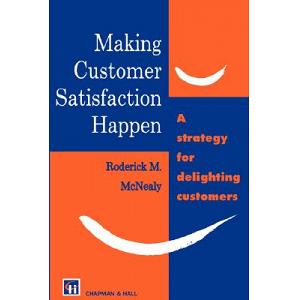Many researchers (Olsen, 2002; Kang, Nobuyuki and Herbert, 2004; Soderlund and Ohman, 2005) have linked the concept of quality and satisfaction to customer behavioural intentions like purchase and loyalty intention, willingness to spread positive word of mouth, referral, and complaint intention. Forbest (2008) argued that customer complaints may be driven by expectation as well as by the actually experienced quality level, a higher level of expected quality leads to more complaints. The researchers suggest that the customers complain can be uses as a way to improve the quality of service.
One of the most representative customer satisfaction models is American Customer Satisfaction Index model ACSI model in here. In the ACSI model, there are drivers of satisfaction on the left side (customer expectations, perceived quality and perceived value), customer satisfaction in the centre, and outcomes of satisfaction on the right side (customer complaints and customer loyalty).
- Customer expectation: a measure of the customer’s anticipation of the quality of a company’s products or services. Expectation represent both prior consumption experience, which includes some non – experiential information like advertising and word – of – mouth and a forecast of the company’s ability to deliver quality in the future.
- Perceived quality: a measure of the customer’s evaluation via recent consumption experience of the quality of a company’s products or services.
- Perceived value: a measure of quality relative to price paid.
- Customer complaints: are measured as a percentage of respondents who indicate they have complained to a company directly about a product or service within a specified time frame. Satisfaction has a negative relationship with customer complaints, as the more satisfied the customers, the less likely they are to complain.
- Customer loyalty: a combination of the customer’s professed likelihood to repurchase from the same supplier in the future.
references:
Olsen, S.O. (2002), “Comparative Evaluation and the Relationship between Quality, Satisfaction and Repurchase Loyalty,” Academy of Marketing Science, 30 (3), 240 – 249.
Forbesw, S.J. (2008). “The Effect of Service Quality and Expectations on Customer Complaints,” The Journal of Industrial Economic, LVI(1), 0022 – 1821.
ACSI (2009), “ACSI methodology”, retrieved 14 March 2009 from http://www.theacsi.org/index.php?option=com_content&task=view&id=48&Itemid=41.

No comments:
Post a Comment